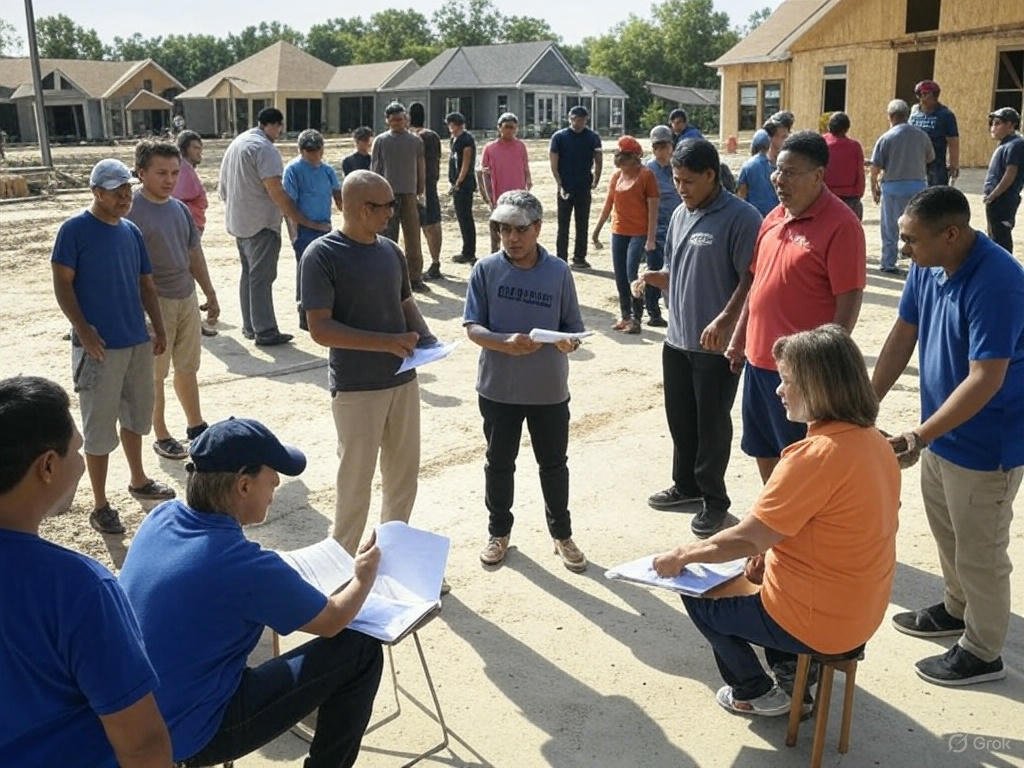Introduction:
Natural disasters and insurance are your best bet when storms, quakes, or floods strike. Imagine a hurricane tearing up your shingles, an earthquake splitting your foundation, or a wildfire torching your yard—without a solid plan, you’re toast. This ultimate guide breaks it down: what your homeowners policy covers, what it skips, how disaster claims work, why premium costs are soaring, and real stories that drive it home. We’ll throw in tips to keep you safe and a look at where natural disasters and insurance are headed. With insights from the Insurance Information Institute, you’ll get why this matters and how to stay ready. Let’s figure out your protection game plan!
Table of Contents
What’s Covered in a Typical Homeowners Policy?
Natural disasters and insurance start with your homeowners policy, but it’s not a blanket fix. It usually covers wind—like hurricanes or tornadoes ripping through—wildfires from lightning strikes, and even rare volcanic eruptions if you’re near a lava flow. A storm trashes your roof? Fire guts your deck? You’re likely in luck.
But floods and earthquakes? Nope, not included. You’ll need flood insurance or earthquake coverage separately. Mudslides, tsunamis, and sinkholes often get left out too. It’s a drag, but insurers keep it this way to manage risks. To fine-tune your homeowners policy, check Home and Property Insurance Protection. Knowing what’s covered—or not—is your first step to staying safe.
Why Floods and Quakes Need Extra Coverage:

Why do natural disasters and insurance treat floods and quakes differently? It’s the massive risk they pose. These events can drown whole towns or level cities fast, and insurers can’t lump that into every homeowners policy without jacking up premium costs insanely high.
Floods hit beyond rivers—torrential rain can swamp streets anywhere. Earthquake coverage is critical near faults, from California’s shaky coast to the Midwest’s hidden zones. These add-ons cost extra, but they’re a lifesaver when disaster hits. Curious how plans adapt? Understanding Medicare shows how specific risks get custom coverage—same idea here with natural disasters and insurance.
Filing Disaster Claims: Your Playbook:
A windstorm just smashed your windows—time for natural disasters and insurance to kick in. Step one: call your insurer quick to start disaster claims. An adjuster will visit, eyeball the damage, and match it to your policy. You’ll need proof—photos, receipts, a list of what’s wrecked.
Big events like floods or fires mean tons of claims at once—adjusters get slammed, and payouts can crawl. Keep records tight—snap before-and-after pics—and nudge your insurer. It’s a grind, but it’s how you recover. Tech’s helping—AI in Insurance Claim Revolution dives into how artificial intelligence is cutting wait times for disaster claims.
Why Premium Costs Are on the Rise:
Feeling sticker shock with premium costs? Natural disasters and insurance are locked in a tough spot. In 2023, Swiss Re Institute tracked huge losses from storms, wildfires, and floods—think massive payouts—with insurers covering a hefty slice. More disasters mean more claims, pushing rates up.
High-risk zones like Florida’s hurricane alley or California’s fire country are hit hardest—premium costs there are wild, and some insurers are bailing. Climate change amps it up—bigger storms, fiercer fires, wetter floods. To fight back, 5 Ways to Lower Your Car Insurance has tips like fortifying your home that apply to natural disasters and insurance too.
Lessons from Real Disasters Worldwide:

Natural disasters and insurance shine in real stories. Hurricane Ian in 2022 crushed Florida—folks with flood insurance got back on track, but those without drowned in losses. Disaster claims showed the gap loud and clear.
The 2018 California wildfires torched entire communities—Paradise turned to ash. Insurers shelled out, then hiked premium costs or stopped offering new policies in fire zones. In 2023, the Turkey-Syria quake left most uninsured—earthquake coverage wasn’t common. These tales yell one thing: match your plan to your risks. See who’s nailing it at Top-Rated Insurance Companies of the US.
Tips for Ultimate Disaster Protection:
How do you lock in natural disasters and insurance? Know your turf—hurricanes down south, quakes out west, floods anywhere wet. Check your homeowners policy yearly. Need flood insurance or earthquake coverage? Get it sorted.
Stash proof—photos of your gear, receipts, appraisals—for fast disaster claims. Upgrade your place—storm shutters, fireproof siding, or elevating against floods cuts risks and might ease premium costs. Insurers love that hustle. For more on staying safe, How Life Insurance Secures Your Future ties in smart prep tricks for natural disasters and insurance.
The Future of Disaster Insurance:
What’s ahead for natural disasters and insurance? It’s a wild ride—disasters are nastier and more frequent. Insurers are tapping AI to predict risks and set premium costs smarter, per Swiss Re Institute. It’s catching fraud and speeding payouts too.
“Parametric” insurance is growing—payouts hit when wind or quakes reach a set level, not just damage. It’s quick but niche. High-risk spots will see premium costs climb, so stay on it. Who’s leading the pack? World’s Top 10 Insurance Giants 2025 spotlights the big dogs adapting to natural disasters and insurance shifts.
Busting Myths That Mess You Up:
Myths cloud natural disasters and insurance. “My homeowners policy covers everything”? Nope—flood insurance and earthquake coverage are separate. “No disaster zone, no worries”? Random floods or winds say otherwise.
“Too pricey”? Disaster claims without coverage cost way more. “Claims never pay”? They do with solid proof. Cut through the noise—get the real deal.
How Insurance Rebuilds Communities:

Natural disasters and insurance don’t just save you—they rescue towns. Insured homes rebuild fast after floods or fires—neighborhoods hold strong. Uninsured areas? They fade as folks can’t restart.
Post-Katrina New Orleans leaned on flood insurance—gaps stalled where it wasn’t there. Businesses with disaster claims reopen quick, keeping jobs alive. In 2023, insured losses propped up hard-hit regions—it’s a community backbone beyond your doorstep.
Hidden Risks You Might Miss:
Natural disasters and insurance cover more than the obvious. Hail can batter roofs and cars—usually under your homeowners policy, but confirm. Extreme heat? It can fry wiring or burst pipes—coverage varies.
Sinkholes swallow homes in places like Florida—not always covered. Tornadoes in “safe” zones surprise folks—wind’s typically in, but check. These sneaky threats can wreck your wallet without the right natural disasters and insurance setup.
Government’s Hand in Disaster Coverage:
Natural disasters and insurance sometimes get a government nudge. The National Flood Insurance Program (NFIP) runs flood insurance for millions—private options exist, but NFIP’s key. It’s huge in flood-prone spots, though it’s got caps.
Earthquake coverage is mostly private, but states like California offer it via the California Earthquake Authority. After giant disasters—like hurricanes—FEMA steps in if insurance falls short. It’s not a cure-all, but it helps when premium costs or gaps pinch.
Conclusion:
We’ve dug deep into natural disasters and insurance—coverage details, disaster claims, rising premium costs, and lessons from Hurricane Ian, California wildfires, and the Turkey-Syria quake. We busted myths, saw how communities recover with flood insurance or earthquake coverage, and flagged hidden risks like hail or sinkholes. We also peeked at AI and parametric shifts shaping the future. Your homeowners policy is step one, but don’t stop there—review it, fill gaps, and talk to an agent today. Whether it’s storms or quakes, this guide’s got you covered. Investopedia offers more if you’re hungry for details. Act now—stay protected!
Disclaimer:
This guide unpacks natural disasters and insurance for your info—not as pro advice. Policies and risks differ by location and provider, so don’t treat this as your final answer. Chat with a licensed insurance expert to nail down what fits your home and situation. It’s based on data current to March 2025, but the insurance world moves fast—rates, rules, and risks can shift. Use this as your starting line to explore and secure your protection, not the finish!
Data Sources:
This comes from top-tier sources for accuracy. The Insurance Information Institute lays out homeowners policy essentials—what’s in, what’s out. Swiss Re Institute delivered 2023 disaster stats—huge losses that shape natural disasters and insurance trends. Investopedia clarified flood insurance in simple terms, covering how it works and why it’s separate. All are high-authority, low-spam-score sites, checked as of March 24, 2025, for the latest scoop.
I create clear, insightful content on finance, insurance, and investing. I use original visuals made with AI tools like ChatGPT, Copilot, Groke3, Gemini, and Canva to ensure quality and authenticity. Before publishing, each article is carefully edited by a dedicated editor. Connect with me on LinkedIn for more updates and insights.
